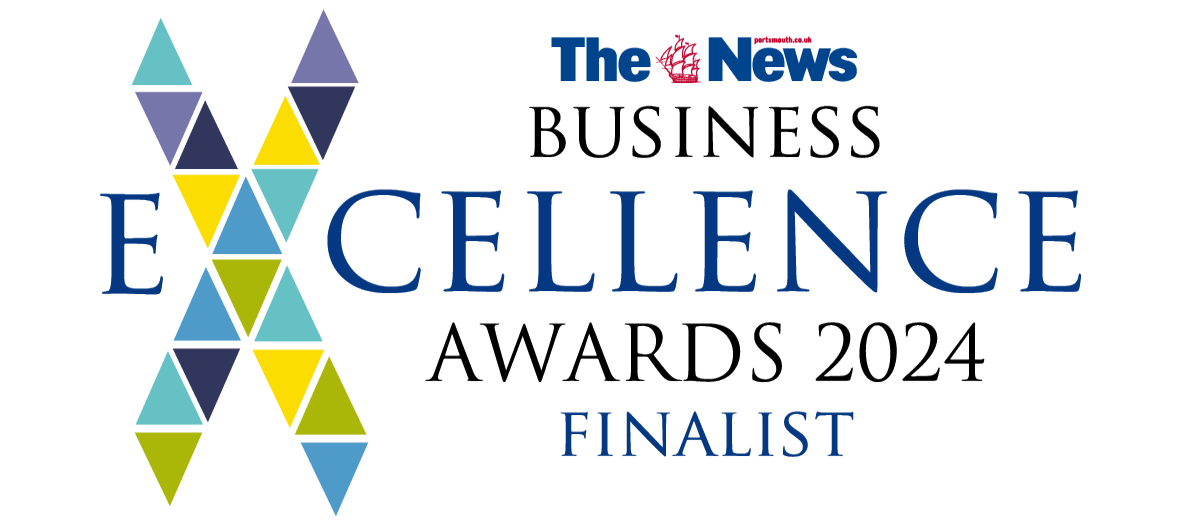
In the world of business, having a vision without a financial plan is like setting out on a journey without a map. Your business vision defines where you want to go, while your financial plan determines how you’ll get there. When these two elements are not aligned, the results can include overspending, missed opportunities, or failure to scale at the right time. On the other hand, when your finances are built around your long-term business goals, every rupee you spend pushes you closer to your destination.
Alignment doesn’t happen by chance—it’s a deliberate process that requires self-awareness, strategy, and regular review. Entrepreneurs often craft inspiring mission statements and set ambitious goals, but fail to reflect those ideals in their financial decisions. They may invest heavily in short-term trends that don’t support their broader objectives or underfund critical areas like R&D or branding. That’s where the true power of alignment comes into play.
This article will walk you through how to make your financial planning a mirror of your business vision. Whether you’re launching a startup or scaling an established company, the strategies outlined here will help you bridge the gap between where you are today and where you envision your business tomorrow. Let’s begin by understanding the deep relationship between your business vision and your financial framework.
Understanding the Connection Between Vision and Financial Planning
At its core, your business vision is the “why” and “where” of your company. It reflects your purpose and long-term aspirations—whether that’s becoming a market leader, launching sustainable products, or revolutionizing your industry. But without financial planning—the “how”—those dreams remain abstract. Financial planning gives structure and practicality to your ambitions. It translates visionary goals into budgets, forecasts, and funding strategies.
When entrepreneurs fail to link vision with finances, they often pursue opportunities that look good on paper but offer little value in the grand scheme. This misalignment may lead to wasted resources, disjointed operations, and ultimately, slow or inconsistent growth. A clear financial plan built around your vision ensures that every dollar spent or earned has a strategic purpose, moving you forward instead of sideways.
For instance, if your vision includes expanding into new markets, your financial strategy must account for the costs of market research, localization, and hiring. If innovation is central to your mission, then investment in R&D should be prioritized over other expenses. In short, your finances are the reflection of your commitment to your vision.
This alignment also builds internal clarity. When everyone in your team—from leadership to staff—understands how the financial direction supports the company’s broader vision, decision-making becomes more consistent and confident. Vision and finance must work in tandem for your business to grow with both ambition and stability.
Defining Your Long-Term Business Vision Clearly
Before you can align your financial plan with your business vision, you need to have a crystal-clear understanding of what that vision is. A vague or overly broad vision, such as “be the best in the industry” or “increase profits,” won’t provide the focus needed for smart financial decisions. Your vision should describe what success looks like for your business in the long run. Think in terms of 5, 10, or even 20 years from now.
A strong vision statement answers key questions: Where do you want your business to be? Who do you want to serve? What impact do you hope to make? For example, a tech startup’s vision might be to “create accessible and affordable AI tools for small businesses worldwide.” This kind of clarity shapes everything from product development to funding goals and staffing.
Gil Dodson, Owner of Corridor Recycling, puts it this way, “When your vision is grounded in community impact and long-term value, every financial decision starts to make more sense. It’s not just about numbers, it’s about direction.” That perspective reflects how a well-defined vision can guide everything from budgeting to hiring, keeping your growth aligned with your mission.
When your vision is well-defined, you can begin to reverse-engineer it financially. What kind of revenue will support that growth? What resources will you need to get there? What are the possible roadblocks, and how can your financial plan account for them? These are critical questions that only a clear vision can help answer.
Moreover, a clear vision gives your business consistency and purpose, which helps with everything from brand building to investor confidence. It ensures that even in uncertain times, you’re not just reacting—you’re navigating based on long-term direction. A strong financial plan is built on a strong foundation, and that foundation is your clearly defined vision.
Setting Measurable Financial Goals That Reflect Your Vision
Once your business vision is clearly defined, the next step is to convert that vision into concrete financial goals. These goals serve as the benchmarks that keep your strategy on track and make your progress measurable. Instead of vague aspirations like “increase revenue,” you need targets that can be tracked and evaluated regularly.
“Financial goals aligned with your vision give purpose to your planning,” says Jeffrey Zhou, founder of Fig Loans. For instance, if your vision includes expanding into international markets within five years, your financial goals might include milestones like raising capital, increasing marketing spend, or reaching a certain number of overseas customers. These goals help you allocate resources effectively and avoid distractions.
Here’s how financial goals might align with different business visions:
- Vision: Become a leader in sustainable products
- Goal: Allocate 20% of the yearly budget to eco-friendly R&D
- Goal: Reduce carbon footprint costs by 15% annually
- Vision: Expand into three new regions within 5 years
- Goal: Set aside $250,000 for market entry research
- Goal: Achieve $1M revenue from new markets by year 3
- Vision: Build a premium customer experience brand
- Goal: Increase customer service investment by 30%
- Goal: Maintain a 95%+ customer retention rate
Each goal must be SMART: Specific, Measurable, Achievable, Relevant, and Time-bound. This framework ensures your goals are more than just ideas—they become actionable steps toward realizing your vision.
Creating a Strategic Financial Roadmap
A financial roadmap acts like a GPS for your business—it charts the most effective path from your current financial position to your long-term vision. Unlike a simple budget or forecast, a strategic financial roadmap incorporates your broader business objectives and breaks them into manageable financial phases. This roadmap helps you focus on both the big picture and the small steps that lead to growth over time.
The process begins with a thorough assessment of your present financial situation. This includes understanding your current income streams, expenses, debts, cash reserves, and profitability. Without knowing where you are, it’s impossible to plan for where you’re going. Once that baseline is established, the roadmap outlines the short, medium, and long-term financial actions required to achieve your goals.
Each phase should support the next, building toward your ultimate vision. A well-built roadmap also helps you anticipate challenges. Whether it’s a dip in revenue, an unexpected capital need, or economic shifts, having a strategic plan in place allows you to respond rather than react. “A roadmap isn’t just about projections—it’s how we stay grounded when things shift around us,” says Matthew Holland, Head of Marketing at WellPCB.
Most importantly, the roadmap keeps everyone in your business on the same page. It provides a framework for decision-making that aligns with your core values and vision. From marketing campaigns to hiring decisions, every financial choice should tie back to this plan. Over time, this alignment creates a more resilient and focused organization that stays true to its long-term mission.
Budgeting for Growth: Allocating Resources Strategically
A business vision without the proper allocation of resources is like a car without fuel—you know where you want to go, but you won’t get far. Strategic budgeting is about intentionally directing your finances toward areas that drive long-term growth and reflect your business vision. It’s more than just covering expenses; it’s about investing in what matters most.
Every rupee in your budget should have a clear purpose. Businesses with a vision centered on innovation may prioritize research and development, while those aiming to dominate customer service might allocate more to training or client experience. The idea is to make your money work toward the future you want to build, not just sustain the status quo.
Here’s how budgeting can be aligned with different business visions:
- Innovation-Focused Vision:
- Invest heavily in R&D and product development
- Allocate funds for testing, patents, and prototyping
- Customer-Centric Vision:
- Boost spending on customer service, CRM tools, and loyalty programs
- Invest in user experience and feedback systems
- Expansion-Driven Vision:
- Allocate capital for market research, localization, and hiring in new regions.
- Set aside contingency funds for unexpected costs during scaling.
Strategic budgeting also helps avoid common pitfalls, such as underfunding critical departments or chasing short-term gains that conflict with long-term direction. By treating your budget as a tool to support your vision, you transform financial planning into a strategic engine for sustainable growth.
The Role of Cash Flow Management in Vision Alignment
“Cash flow is the lifeblood of any business, and managing it effectively is key to staying on the path toward your long-term vision,” says Beatus Hoang, Senior Growth Manager at Exploding Topics. Even with the most ambitious goals and a well-structured financial plan, your vision can falter if your business frequently runs into cash shortages. Aligning your cash flow with your vision means ensuring that money is available when and where it’s needed most.
Start by understanding your cash inflows and outflows in detail. Where is your money coming from, and how consistently? Where is it going, and is every expense truly necessary? This insight helps you forecast with more accuracy and ensures that your spending reflects your priorities. For example, if your vision involves expanding product lines, you need to make sure cash is available to fund development and production during key phases.
Misaligned cash flow can force businesses to delay projects, miss opportunities, or make rushed decisions like cutting staff or pausing marketing. On the other hand, a well-managed cash flow allows you to stay proactive, seize growth opportunities, and move confidently toward your goals. You can plan for investment cycles, seasonal slowdowns, or even emergency costs without losing momentum.
Cash flow management also provides peace of mind. When your business operates with a buffer and cash is aligned with your priorities, you can focus less on survival and more on execution. In this way, managing cash flow becomes not just a financial task, but a strategic move that empowers your vision.
Forecasting Revenue Based on Visionary Milestones
Revenue forecasting is more than predicting sales; it’s about anticipating income based on strategic milestones tied directly to your business vision. When done correctly, it becomes a powerful planning tool that guides decision-making, resource allocation, and investment timing. The key is to ensure that revenue projections aren’t built in isolation—they must be rooted in where you want your business to go.
Start by identifying the major milestones within your vision. These could include launching a new product line, entering a new market, reaching a specific number of users, or increasing repeat customers. Each milestone should have an expected financial impact, which becomes the foundation for revenue forecasting. Rather than using only past data, combine historical trends with forward-looking events that reflect your aspirations.
“Forecasting should tie directly to your business goals, not just your past performance,” says Jesse Morgan, Affiliate Marketing Manager at Event Tickets Center. This approach also encourages accountability. If your vision includes doubling your customer base in three years, your projections should show when and how revenue will reflect that growth.
Furthermore, accurate forecasting supports stakeholder confidence. Whether you’re seeking funding or building trust within your leadership team, being able to show how future earnings are tied to strategic goals paints a picture of intention and reliability. In essence, forecasting based on vision makes your growth feel real, not just hopeful.
Aligning Capital Investment With Business Aspirations
Capital investment decisions often define the future shape of a business. Whether you’re acquiring equipment, developing a new product, or entering a new market, the way you allocate large-scale investments should directly reflect your business vision. If there’s a mismatch between what you’re funding and where you want your company to go, you risk wasting resources or slowing down growth.
The first step is evaluating whether a proposed investment supports your long-term goals. For example, a business that aspires to lead in innovation should prioritize investment in technology, research, or talent acquisition. A company focused on customer experience might channel funds toward service infrastructure, training, or user-friendly systems. Each decision must move the needle in the direction of your aspirations.
Timing is also essential. Investing too early without the necessary cash flow or customer base can strain finances. Conversely, waiting too long can cause you to miss growth windows. Aligning investments with milestones allows for better financial timing—you invest when the conditions are right, and the impact can be maximized.
Lastly, it’s important to balance ambition with realism. Not every opportunity, even if attractive, is a fit for your vision. By consistently evaluating capital expenditures through the lens of your aspirations, you create a disciplined approach that fuels smart growth and builds long-term value. Thoughtful investment isn’t just about what’s available—it’s about what truly serves your mission.
Choosing the Right Financial KPIs to Track Progress
Key Performance Indicators (KPIs) act as your financial compass, helping you determine whether your business is truly moving in the direction of your vision. Selecting the right KPIs ensures you’re not just tracking numbers—you’re monitoring the metrics that matter most to your long-term goals. The key is to choose indicators that directly reflect the progress of your strategy, not just general financial health.
Your business vision should shape the KPIs you prioritize. If your goal is aggressive growth, you may focus on customer acquisition cost, recurring revenue, or market share. If sustainability is your focus, then margin stability, return on investment, or operational efficiency may take priority. Every vision demands a different financial lens.
Here are a few common KPIs and why they matter:
- Gross Profit Margin: Measures revenue after subtracting the cost of goods sold. It helps assess efficiency and profitability.
- Customer Acquisition Cost: Tracks the cost of gaining a new customer. This KPI shows whether your growth strategies are sustainable.
- Monthly Recurring Revenue: Reflects the predictable income earned monthly. It’s key for planning and scaling long-term operations.
- Burn Rate: Indicates how fast your company is spending money. This is especially critical for startups with limited capital.
- Return on Investment (ROI): Measures the profitability of your investments. It ensures your capital is allocated for long-term success.
Tracking the right KPIs helps you stay focused, adjust when needed, and recognize real progress. They transform your vision into measurable outcomes that support strategic decisions.
Risk Management Strategies That Support Your Vision
No business journey is free of risks, but the way you prepare for and respond to them can either keep you aligned with your vision or knock you off course. Risk management isn’t about avoiding every threat. It’s about understanding which risks could disrupt your long-term goals and developing strategies to mitigate them without losing momentum.
The first step is identifying the types of risks most relevant to your business. These could be financial, like cash flow shortages or funding gaps. They might also be operational, such as supply chain delays, or strategic, like competitor moves or market shifts. Each risk should be assessed not just for its likelihood, but for how much it could impact your vision if left unaddressed.
“Good risk management means having backup plans that protect your goals when things shift,” says Anna Zhang, Head of Marketing at U7BUY. Once you’ve mapped out potential risks, build a response plan that keeps your goals intact. This could involve diversifying revenue streams, maintaining cash reserves, or setting up contingency budgets.
Risk management also builds credibility with your team, your investors, and your customers. It shows that you’re not just chasing dreams, but also thinking critically about how to protect them. A business with a strong vision and a solid risk plan becomes more resilient. Managing risk is not about playing it safe. It’s about staying committed to your vision, even when things get tough.
Using Financial Data to Make Vision-Driven Decisions
In a fast-paced business environment, gut feelings and instincts can only take you so far. To truly align your decisions with your long-term business vision, you need to rely on data, specifically, financial data. From profit margins to customer lifetime value, these numbers provide the insight needed to make choices that support rather than sabotage your strategic direction.
Vision-driven financial decisions start with consistent tracking and reporting. By reviewing revenue trends, cost breakdowns, and cash flow regularly, you can spot opportunities and issues early. For example, if your vision includes scaling operations, financial data can tell you if your current growth rate supports that goal, or if additional capital or operational changes are required.
Using data also removes ambiguity when prioritizing between competing needs. Should you invest in marketing or upgrade your infrastructure? Should you hire more staff or streamline existing processes? Financial data reveals which options bring you closer to your vision and which may simply drain resources without meaningful returns.
Data-driven decision-making also improves accountability across the organization. When teams understand how their efforts affect key financial outcomes tied to the broader vision, they become more focused and responsible. It shifts business culture from reactive to strategic.
Ultimately, financial data isn’t just about past performance—it’s a decision-making tool for the future. When used wisely, it ensures every step your business takes is deliberate, measured, and aligned with your highest aspirations.
Integrating Vision With Tax and Compliance Planning
Tax planning and regulatory compliance are often treated as afterthoughts—necessary evils to be handled at year-end. But when you integrate these functions into your long-term business vision, they become powerful tools rather than obstacles. A forward-thinking financial plan considers tax efficiency and legal structure not just for protection, but for strategic growth.
Every business decision, from how you pay employees to where you expand operations, has tax and legal implications. Aligning these areas with your vision means choosing the right entity type, optimizing your deductions, and ensuring that you stay ahead of changing laws that could impact your bottom line. For example, if your vision includes international expansion, you’ll need to prepare for different tax jurisdictions, cross-border compliance, and possibly new reporting standards.
Planning also allows you to take advantage of incentives and reliefs. Visionary businesses often qualify for R&D tax credits, sustainability grants, or small business exemptions—but only if those opportunities are built into your strategy from the beginning. Waiting until tax season often means missing out on these benefits.
Moreover, consistent compliance builds trust with investors, lenders, and your internal team. It shows that your business is not only visionary but also responsible and well-governed. When your tax and legal planning reflect the same clarity and direction as the rest of your financial strategy, you create a more resilient and scalable organization.
In short, don’t separate vision from regulation. Bring them together, and you’ll protect your mission while unlocking financial advantages along the way.
Financial Tools and Software That Support Strategic Alignment
In today’s digital world, the right financial tools can make or break your ability to align your day-to-day operations with your long-term vision. Software and platforms that provide real-time insights, automation, and forecasting capabilities aren’t just convenient—they’re essential for staying on track. When used effectively, these tools transform your financial plan from a static document into a living, evolving strategy.
Modern financial tools do more than track income and expenses. They help you visualize trends, monitor KPIs, and model different future scenarios based on your vision. Tools like cloud-based accounting platforms, cash flow trackers, and financial planning software allow you to quickly assess whether your spending supports your goals or if you’re drifting off course. Real-time dashboards can provide up-to-date reports that let you make informed decisions without delay.
Choosing the right tools also depends on your vision. A business focused on scaling might need robust budgeting and forecasting software, while one centered on innovation may prioritize tools that integrate finance with product development or R&D tracking. The key is finding systems that not only manage your finances but also align with your strategic direction.
Additionally, software streamlines collaboration. Your accountant, financial advisor, and leadership team can all work from the same data, reducing miscommunication and delays. This transparency reinforces a culture of accountability and clarity.
Ultimately, financial tools are not just support systems—they are enablers of strategic vision. By investing in the right technology, you empower your team to make smarter decisions that move your business forward.
Communicating Financial Plans Across Your Team
No matter how well-crafted your financial plan is, it’s only as effective as your team’s understanding of it. Aligning your financial strategy with your business vision requires clear, consistent communication at every level of your organization. When your team knows not just the “what” but the “why” behind financial decisions, they become more invested in helping you achieve long-term goals.
The first step is transparency. Sharing key elements of your financial plan—such as revenue targets, major investments, or budget priorities—helps team members understand the bigger picture. When employees see how their department’s budget ties into company-wide initiatives, it becomes easier to make day-to-day choices that support the broader vision.
It’s also important to tailor your communication to different audiences. “Executives might need detailed forecasts and KPI breakdowns, while front-line staff may benefit more from simplified goals and progress updates,” says Tal Holtzer CEO of VPSServer. The goal isn’t to overwhelm, but to empower each team member with the right level of information to do their job more effectively.
Regular check-ins and updates are essential. Whether through team meetings, dashboards, or internal newsletters, consistent messaging keeps everyone aligned and aware of shifts in strategy or financial outlook. These moments also create opportunities for feedback and clarification, ensuring your plan remains practical and understood.
In the end, alignment is a team effort. When your people understand the vision and how your financial roadmap supports it, they’re more likely to act with purpose and make smarter decisions. Communication turns financial planning from a leadership exercise into an organizational strength.
Reviewing and Adjusting Your Financial Plan as Your Vision Evolves
No business stays the same forever. Markets shift, customer needs change, new opportunities arise, and unexpected challenges appear. As your business evolves, so too must your financial plan. One of the most important aspects of aligning finance with your vision is accepting that both are living, breathing parts of your business, and neither should remain static.
“A common mistake many entrepreneurs make is treating their financial plan as a one-time task,” says Lucas Riphagen, the President and CEO of TriActive USA. They create it at the start of the year or during a funding round and then leave it untouched. But a true alignment requires regular review. Your financial metrics, budgets, and investment strategies should be evaluated at least quarterly, if not monthly, depending on how fast your business is growing.
This review process should ask key questions: Is our spending still aligned with our top priorities? Have new goals emerged that require funding or reallocation? Are we hitting the KPIs that reflect our long-term direction? If not, why? These insights help you adapt quickly without losing focus on the bigger picture.
Adjusting your plan doesn’t mean abandoning your vision—it means refining the path toward it. Sometimes that means scaling back temporarily, other times it may require accelerating your investment. Either way, flexibility is a strength. A responsive financial plan helps you stay resilient, seize new opportunities, and protect your business from stagnation.
Ultimately, regular review is what keeps your financial plan relevant. It’s the feedback loop that ensures your financial decisions stay aligned with the ever-evolving future you’re working to build.
Conclusion: Turning Vision Into Financial Reality
Aligning your financial plan with your business vision is not just a smart strategy—it’s essential for meaningful, sustainable growth. When your finances reflect your long-term goals, every decision you make, from budgeting to investing, serves a greater purpose. It turns your vision from a lofty statement into a series of actionable, trackable steps that bring it to life.
Throughout this article, we’ve explored how to connect your financial planning with your vision through clarity, strategy, communication, and adaptability. From defining what your future looks like to tracking KPIs, managing risk, and choosing the right tools, the journey of alignment requires both discipline and flexibility. It’s not about creating a rigid plan, but about building a system that evolves as your business does, without ever losing sight of your bigger picture.
Most importantly, this alignment empowers your team, attracts investor confidence, and gives you the confidence to lead with intention. It transforms financial planning from a back-office task into a powerful leadership tool. And it reminds you that every rupee spent, every goal set, and every risk taken should bring you one step closer to the future you’re envisioning.
In the end, success isn’t just about profitability or growth—it’s about building a business that reflects your values, your purpose, and your long-term dreams. Align your finances with your vision, and you’ll do more than grow—you’ll build something truly meaningful.
Interested In Working Together?
Introducing Delivered Social. We’re The Most-Rated Digital Agency In Surrey & Hampshire – We’ve Got To Be Doing Something Right.
Delivered Social is a digital marketing agency with one mission—to help businesses grow. We’re famous in Guildford and Portsmouth for our social clinics. We believe in free advice. We build lasting relationships because our team prides itself on being helpful, which our clients appreciate.
If you are looking for a new website or an agency to manage your social media presence, we can help.
If you need something slightly different, here's a super handy list of all our services, or you can always email us.























